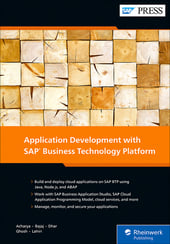Enterprise architecture has often been described as a city map of the IT landscape for the customer.
There are more formal definitions of enterprise architecture, of course. For example, the TOGAF Standard defines it as “a blueprint that enables the organization to understand, analyze, and manage its current and future state.” An enterprise architect helps in doing exactly that by serving as the custodian of the landscape. They carve out the path to a future-state IT landscape that supports the target operating model.
In today’s world, most companies have in their IT landscape a mixture of SAP, non-SAP, cloud, and on-premise applications. These are based on old and new technology, and often connect with various external systems, be it banks, government sites, or business networks of vendors and customers.
In the SAP world, enterprise architects need to understand the full gambit of the SAP landscape, how that landscape interacts with and connects to the various cloud and on-premise SAP applications, and how they connect to the non-SAP world. They need to set up the architecture principles based on the latest trends, which can make the IT area equipped to help businesses in an agile, robust, and future-proof way.
What Is SAP BTP?
One of the paradigm shifts which has happened in the last decade is the platform-as-a service concept, and SAP Business Technology Platform (SAP BTP) is SAP’s offering in this space. It has evolved over many years to become a comprehensive platform with immense capabilities, both technical and business content-wise. It adopts the latest and greatest features from open sources, which enables a microservice-based, event-driven architecture that supports multi-tenancy.
The pillars of SAP BTP provide a lot of ready-to-use business content from SAP and SAP-certified partners. Here’s a brief look at each:
- Development and integration: Includes an extension platform for building customizations for cloud and on-premise SAP solutions. It uses several technologies, such as the low-code tool SAP Build and open-source platforms like Cloud Foundry, adopted for the SAP world. SAP BTP also allows for integration using several protocols to both SAP and non-SAP systems, on the cloud and on-premise, using tools such as Cloud Integration, API Management, SAP Event Mesh, open connectors, etc.
- Analytics: Provides detailed analytics functionality such as smart planning using solutions like SAP HANA Cloud and SAP Analytics Cloud.
- Data Management: SAP Datasphere and SAP Master Data Governance.
- Intelligent technologies: Utilizes concepts such as machine learning via SAP AI Business Services.
Common Enterprise Architecture Tasks
Today, more and more use cases of cross-system workflows or cross-process KPIs are coming into use with the advent of things like business imperative evolution (things like sustainability reporting come to mind), Industry 4.0, and Industry 5.0. These use cases include orchestrating data across multiple systems and entities/business networks.
Enterprise architects, whose area of influence goes way beyond a single application or single SAP product, would need to know these capabilities of SAP BTP to guide the IT teams for leveraging them to meet these changing goals.
For starters, using SAP Extension Suite to minimize customization of the core ERP and pushing customizations to the platform (known as “keeping the core clean”). Next, they’d need to leverage functionalities of multiple applications through APIs, exposed through SAP API Business Hub in SAP BTP.
Enterprise architects also need to orchestrate business processes across the landscape as needed. This might mean using SAP BTP to help monetize intellectual property for industry-specific uses through custom apps that leverage SAP, non-SAP, and hyperscaler capabilities. Another option might be to leverage AI to make the apps work smarter by creating/importing machine learning-based algorithms, automating repetitive tasks, and leveraging workflows.
In addition to these tasks, an enterprise architect might utilize the various application lifecycle management and DevOps capabilities provided by the platform, integrating them with standard tools like Jenkins and GitHub.
Using SAP BTP for Enterprise Architecture Tasks
So, how does the enterprise architect put SAP BTP knowledge into use in their work?
One use case is planning and road mapping. This is when the enterprise architect defines or influences the creation of the upcoming architecture for business transformation. They can assess and position the SAP BTP platform as a major factor in an SAP-centric landscape. The adoption is factored into the roadmap, based on the applicability of the use case.
The enterprise architect will put in the architectural patterns for different types of use cases in the design guidelines. These help provide the architectural principles for the landscape under construction.
Next, the defined patterns are checked in an ongoing review of architecture for new applications being built on SAP BTP. The enterprise architect will review whether the applications built are optimized and providing ample automation, or whether something can be improved.
Conclusion
SAP BTP platform knowledge is key to those enterprise architects using SAP in their business landscape. Keeping an eye on the latest features and roadmaps of the related tools and functionality can better help you to harness its power in the IT landscape.
There are plenty of great learning resources for SAP BTP out there. To get a quick start, leverage the following resources. These will give you both an overview and comprehensive understanding of the capabilities and design principals of SAP BTP.
- The official SAP BTP product page
- OpenSAP Courses like SAP Business Technology Platform in a Nutshell and An Enterprise Architect’s View on SAP Business Technology Platform
- My bestselling book Application Development with SAP Business Technology Platform
Learn SAP BTP in Our Rheinwerk Course!
What is SAP Business Technology Platform and what can it do? Get all the information you need in this course. Take a tour of the platform’s tools and services for development, integration, analytics, data management, and more. Learn directly from the experts and see SAP BTP in action with practical demos! Get access to course recordings by clicking the banner below.
This post was originally published 7/2023.





Comments